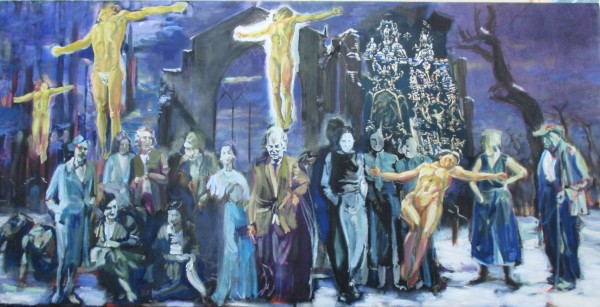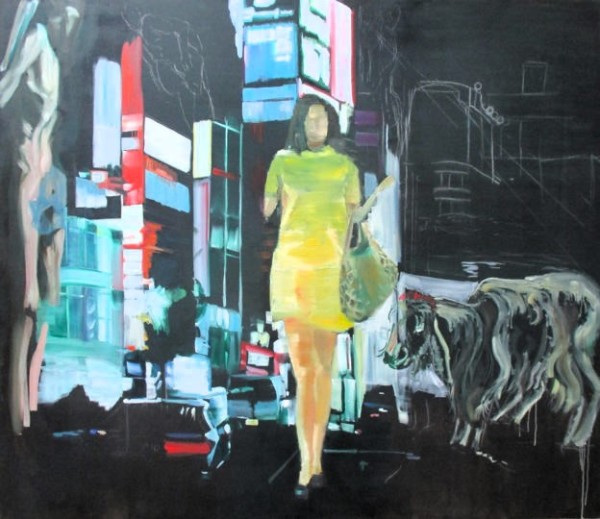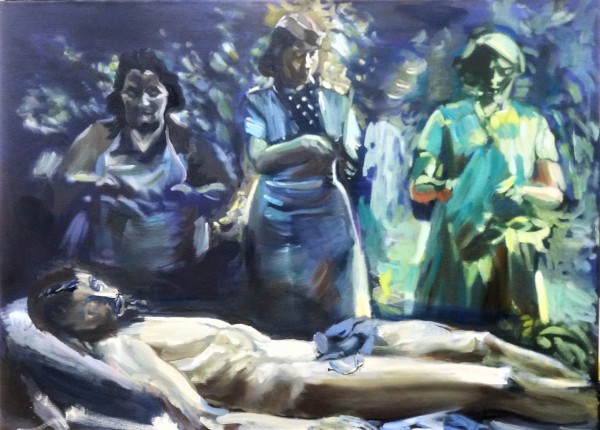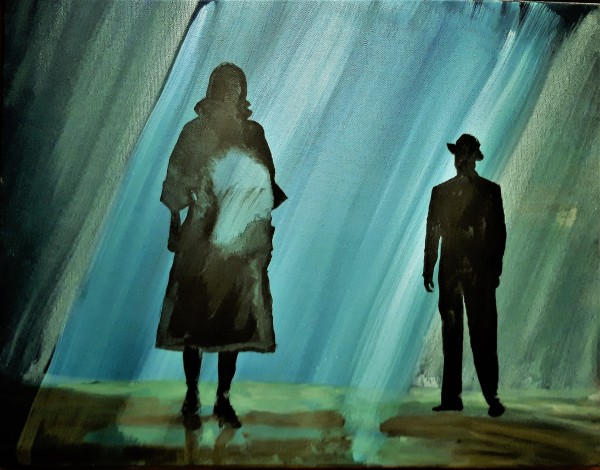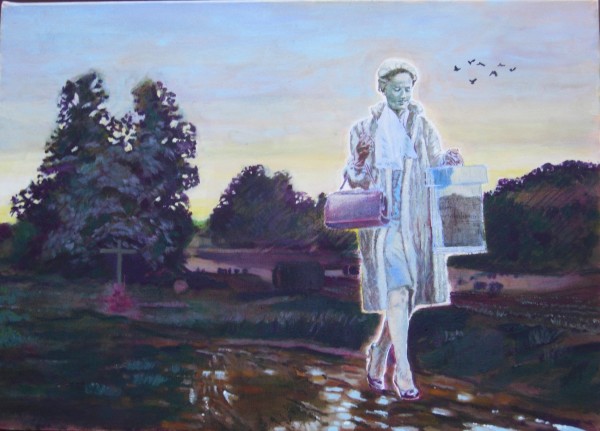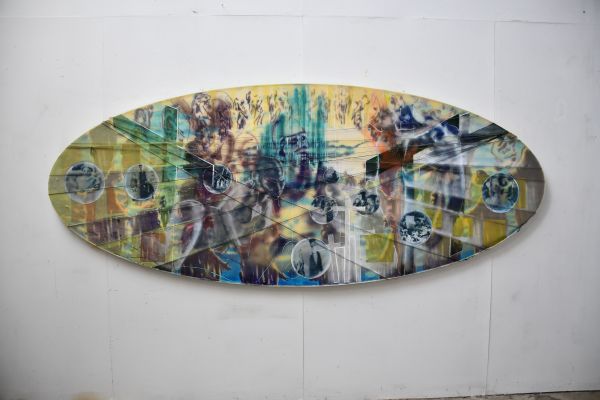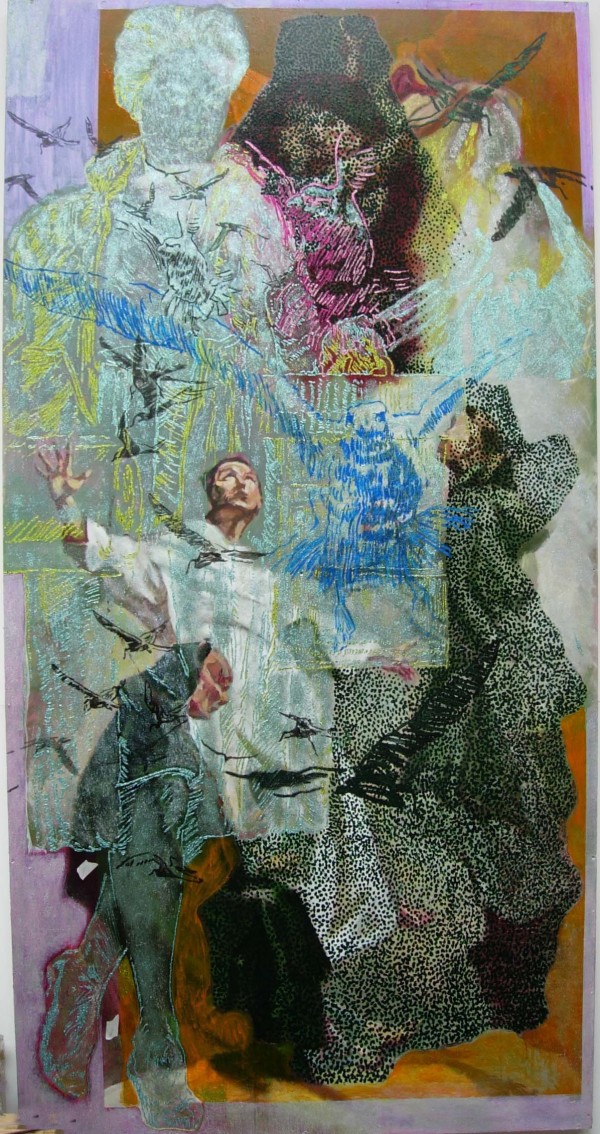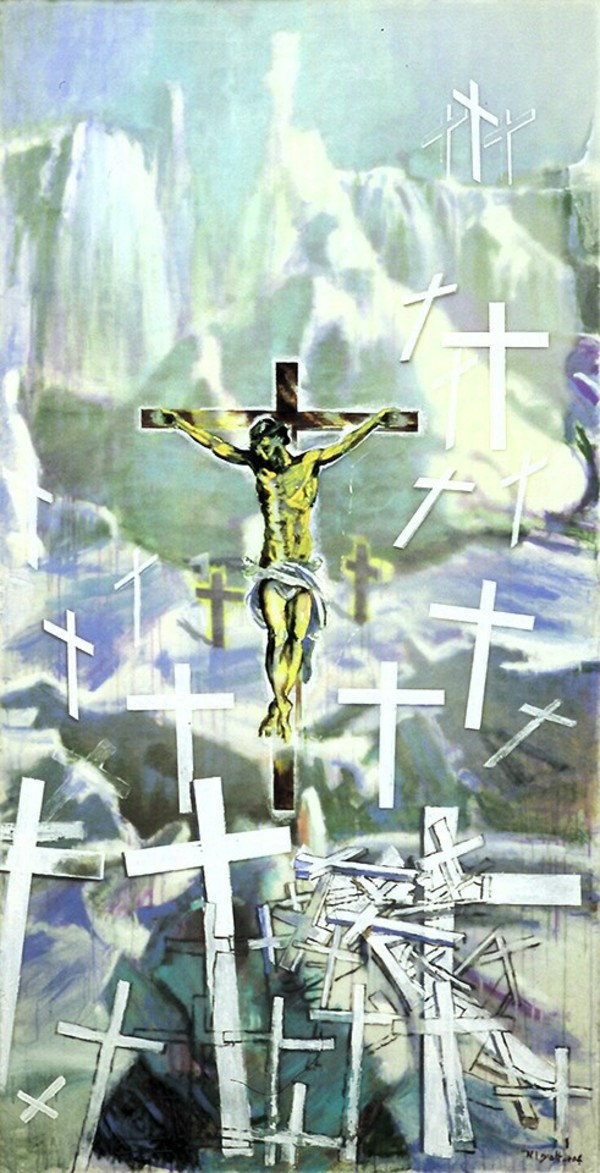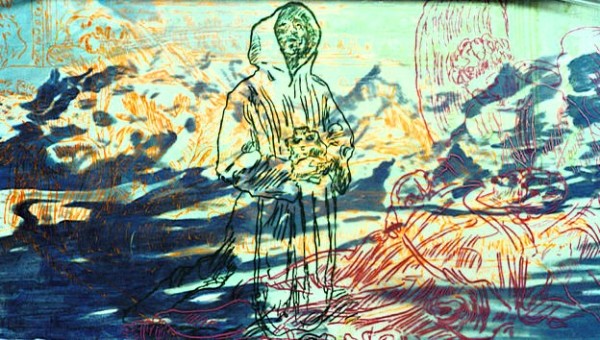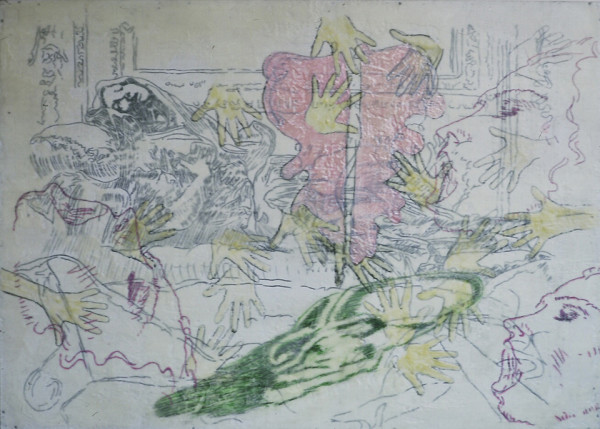Documents
Exhibited:
2002. 'Lonely this Christmas''. James Windsor Art @ i-Level, London.
Literature:
Wyatt, Nicholas (2015). 'The Christian image and contemporary British painting: (the communication of meaning and experience in religious paintings)'. Loughborough University. Thesis. https://hdl.handle.net/2134/17679 (p.256, fig.68)
Commentary
'At first I couldn't make out what was wrong with this image, (The Lonely Protestant), then the idea of the end being brought into the beginning made it unpleasantly uncomfortable. And so I began thinking about other inappropriate responses, which led me to go in search of images, none of which were actually religious, and then again, just as George Shaw's work being one long title 'Scenes from the Passion', they all were.'
James Windsor (curator of Lonely this Christmas at i- Level, London.2002 '
The Lonely Protestant: A Closer Look
Nicholas Wyatt's The Lonely Protestant (1999) is a captivating mixed media painting that addresses themes of isolation, faith, and the human condition. This commentary will explore these broad themes and potential interpretations.
Key Themes and Interpretations
* Isolation and Loneliness: The title itself- The Lonely Protestant- suggests a sense of isolation, perhaps within a religious or spiritual context. The painting depicts a crucifixion, amidst a vast and snowbound landscape. On the horizon a small group of figures looks upon this spectacle. The isolated figure on the cross heightens a feeling of disconnection- from what is not exactly clear – community? or faith?
* Faith and Doubt: The work explores the individualized struggles of Protestant belief, grappling with doubts or uncertainties. The isolated figure on the cross suggests a contemplative or introspective mindset, suggesting a search for meaning or spiritual guidance.
* Social and Cultural Commentary: Nicholas Wyatt's work often engages with broader social and cultural issues. The Lonely Protestant might offer a commentary on the emphasis within Protestant culture of individual faith, as opposed to collective faith or even the challenges of maintaining faith in a secularizing society or the experience of being a minority group within a larger community.
Artistic Style and Techniques
Wyatt's mixed media style allows for a rich and textured composition. He often incorporates elements of collage, paint, and other materials to create visually complex and evocative works. The painting's composition, color palette, and symbolism can all contribute to the overall narrative and meaning.
Art Influences in The Lonely Protestant.
Nicholas Wyatt's The Lonely Protestant employs a minimalist snow-bound landscape as a powerful and evocative visual element. This choice aligns with several significant art historical movements and concepts.
The Sublime
* The Sublime: The vast, empty landscape and the sense of awe and wonder it inspires evoke the concept of the sublime, a Romantic ideal that celebrates the power and beauty of nature. The painting suggests a confrontation with the sublime, highlighting the individual's smallness in the face of the vast and indifferent universe. This dynamic view of the Sublime is contrasted by Nicholas Wyatt in his essay, 'Capitalism and the Symptom of the Sublime' ( Publisher: Re-Visions & Loughborough University, 2010), where he argues the contemporary sublime is predicated on magnitude - global capitalism - rather than Nature. A podcast of this paper, narrated by Richard Price of Academia.edu is available to listen to by clicking on the link above.
Symbolism and Connotation
* Symbolism: The snow-bound landscape can be seen as a symbol of isolation, coldness, and spiritual barrenness. This aligns with the painting's overall themes of solitude and the search for meaning.
* Connotation: The color white, often associated with purity and innocence, can also carry negative connotations in this context, suggesting a sense of emptiness or spiritual void.
Minimalism and Abstract Expressionism
* Minimalism: The painting's stripped-down composition and emphasis on simple forms and colors resonate with the minimalist art movement of the 1960s and 1970s. Minimalists sought to reduce art to its essential elements, focusing on pure form and color over representational content.
* Abstract Expressionism: While not a direct influence, the painting's focus on emotional expression and the subjective interpretation of form and color also echoes the Abstract Expressionist movement of the 1940s and 1950s. Abstract Expressionists sought to convey their inner emotions and experiences through non-representational art.
The Lonely Protestant in the Context of the Romantic Sublime.
Nicholas Wyatt's The Lonely Protestant shares significant parallels with the Romantic art movement and the concept of the sublime, particularly as explored by artists like Caspar David Friedrich and J.M.W. Turner.
Key Connections to Romanticism and the Sublime
* Emphasis on Nature: Both Wyatt and Romantic artists often used nature as a powerful symbol and backdrop for exploring human emotions and experiences. The vast, snow-bound landscape in The Lonely Protestant echoes the Romantic fascination with the natural world, particularly its awe-inspiring and sublime qualities.
* Contemplative Solitude: Romantic artists often depicted solitary figures contemplating the natural world, reflecting on their place in the universe and the mysteries of existence. The implied solitary figure in Wyatt's painting aligns with this same Romantic tradition, suggesting a contemplative and introspective state.
* The Sublime: The concept of the sublime, a Romantic ideal that celebrates the power and beauty of nature, is central to The Lonely Protestant. The vast, empty landscape and the sense of awe and wonder it inspires evoke the sublime, highlighting the individual's smallness in the face of the vast and indifferent universe.
* Emotional Intensity: Romantic artists often sought to convey strong emotions through their art, often focusing on themes of awe, terror, and the sublime. Wyatt's painting similarly evokes a sense of emotional intensity, inviting viewers to contemplate the profound and often unsettling aspects of the human experience.
Specific Comparisons to Romantic Artists
* Caspar David Friedrich: Friedrich's paintings often featured solitary figures gazing out at vast landscapes, suggesting a sense of contemplation and awe. One thinks of paintings like Caspar David Friedrich’s ‘Monk by the Sea’or ‘The Wreck of Hope’.. ‘The Lonely Protestant’ shares this contemplative quality, with the implied figure standing alone in the vast, snow-bound landscape.
* J.M.W. Turner: Turner's dramatic and often turbulent landscapes explored the power and unpredictability of nature. While The Lonely Protestant is less dramatic, it still conveys a sense of awe and wonder at the vastness of the natural world, echoing Turner's exploration of the sublime.
Overall Significance
The minimalist snow-bound landscape in The Lonely Protestant contributes to the painting's overall impact by:
* Reinforcing the themes of isolation and solitude: The vast, empty landscape emphasizes the individual's sense of detachment from the world.
* Creating a sense of emotional intensity: The starkness and simplicity of the landscape can evoke a powerful emotional response in the viewer.
* Engaging with art historical traditions: The painting's minimalist style and symbolic elements connect it to significant art movements and concepts.
By employing this minimalist landscape, Wyatt creates a visually striking and thought-provoking work that invites viewers to contemplate the complexities of faith, solitude, and the human condition.
In conclusion, The Lonely Protestant can be seen as a contemporary exploration of Romantic themes and ideals. Wyatt's painting aligns with the Romantic emphasis on nature, solitude, and the sublime, offering a powerful and evocative meditation on the human condition and our place in the universe.
- Subject Matter: Figure in Landscape




